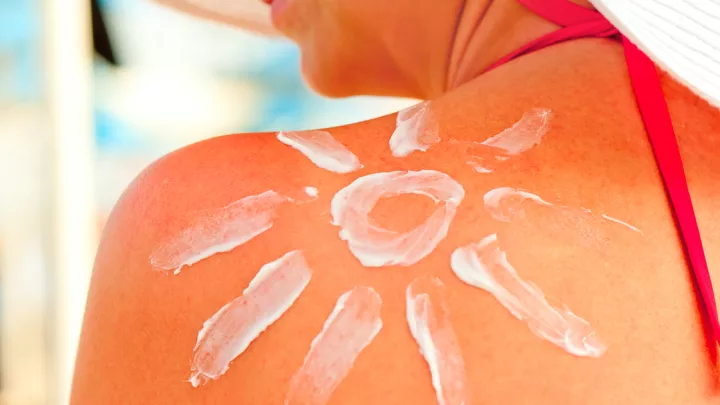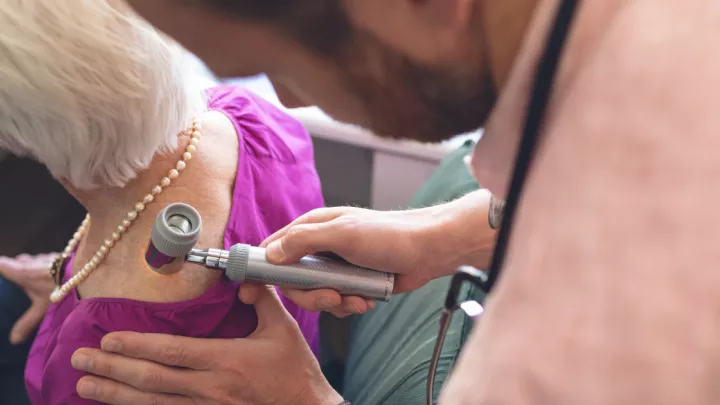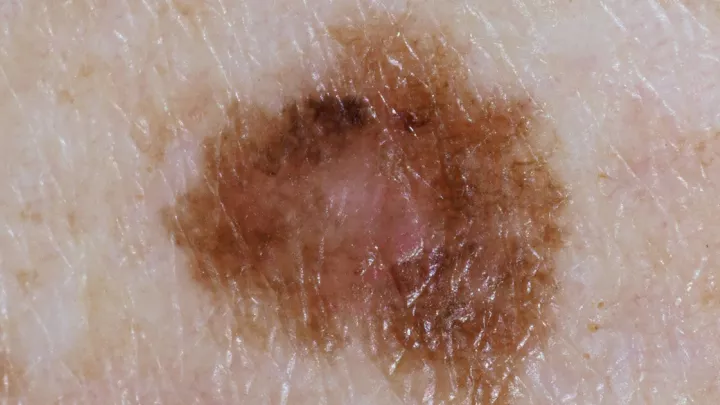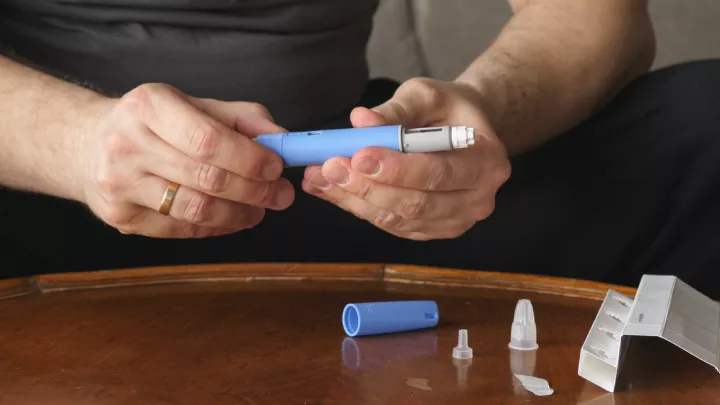Melanoma: Risks, treatment options, and more
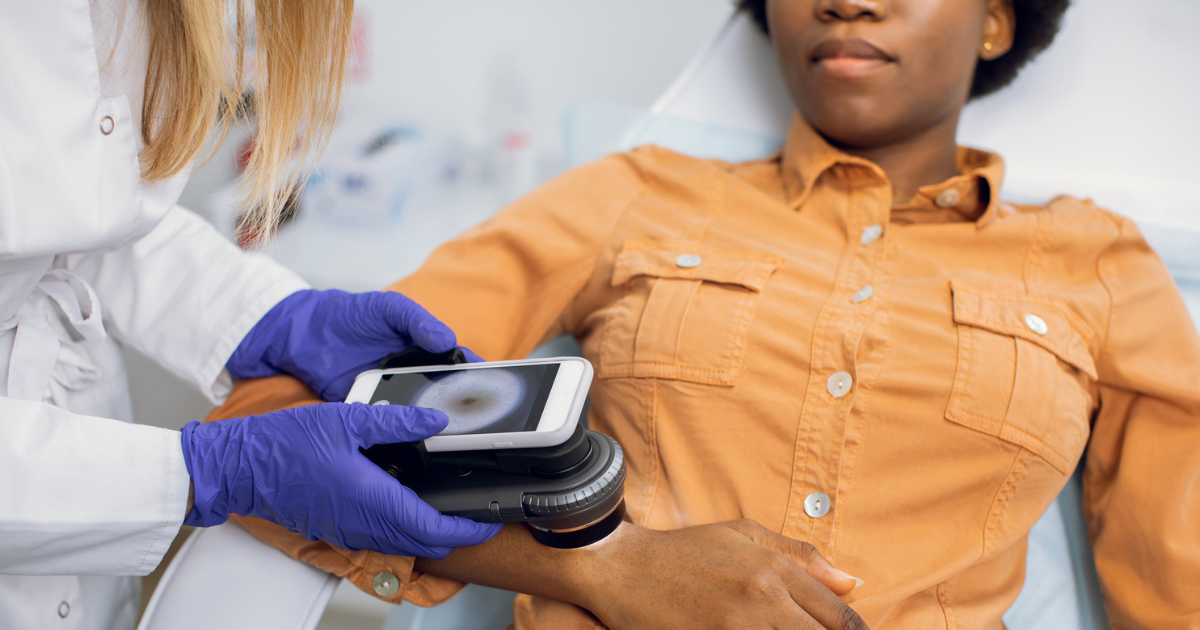
When it comes to skin cancer, early detection is critical. Early diagnosis is associated with better outcomes and more successful treatment options.
Every year, nearly 80,000 new cases of melanoma are diagnosed, causing over 10,000 deaths annually. “The incidence of melanoma is increasing by 2.6% every year and faster than almost every other malignancy,” says Nebraska Medicine Chief of Surgical Oncology Joshua M. V. Mammen, MD, PhD. “It’s one of the fastest growing cancers in the United States, and estimated that 1 in 53 people will develop melanoma at some point in their lives.”
What types of skin cancer are there?
Skin cancer can occur anywhere but is often on the head and neck due to increased sun exposure to those areas. Basal cell cancer is the most common, followed by squamous cell cancer, melanoma, Merkel cell and sweat gland cancers. Melanoma is amongst the most serious skin cancers.
What are the causes of melanoma, and who is at risk?
Sun exposure is the most common cause of all skin cancers. Individuals can reduce their risk by using sunblock and reducing UV exposure., If you are at higher risk for developing melanoma or you’ve had melanoma before, your dermatologist may recommend frequent visits.
5 Risk factors you cannot control:
1. Skin type
- Racial background: White people have an increased risk, 10 times more than Black individuals and seven times higher than Hispanic individuals
- People with fair skin, red hair and blue eyes are at higher risk
2. Age
- Young skin is more sensitive to ultraviolet radiation damage than older skin
- Skin cancer risk increases with age
3. Gender
- While men have an overall higher risk of developing melanoma (a 1.7-fold increase), the incidence in young women is rising
4. Previous history of melanoma
- If you’ve had melanoma before, you are at a 900-fold increased risk (by 3% to 7%) of developing it again.
5. Moles
- Having many moles increases your risk (over 50 increases risk five to 17-fold).
3 Risk factors you can control:
1. UV exposure: Reducing sun exposure reduces skin cancer risk.
2. Sunburns: Avoid sunburns to reduce your risk. The number of severe and painful sunburns you’ve experienced, especially at a younger age, makes a difference. Ten or more episodes in your life double your risk of developing skin cancer.
3. Avoid using tanning beds: Tanning bed use increases melanoma risk, and ultraviolet radiation is classified by the World Health Organization as a carcinogen.
How is melanoma diagnosed and treated?
Melanomas are often diagnosed by a routine screening visit or when someone goes to have a concerning mole evaluated. A dermatologist will perform a biopsy if something looks suspicious. The tissue will be examined under a microscope for evidence of skin cancer cells.
Melanoma treatment is most effective when found early, requiring less aggressive treatments and more successful outcomes.
The primary treatment of melanoma is surgery. How much tissue is removed depends on the melanoma’s thickness (how far it’s burrowed into the skin). “The thicker the melanoma, the larger the margin needed during surgery to remove it all,” says Dr. Mammen. “The incision can be 2.5 to 4 or 5 inches long.”
Genetic testing
If a young person is diagnosed with melanoma, they should consider seeing a genetic counselor to thoroughly examine their family history and discuss getting a genetic panel test.
Clinical trials are ongoing at University of Nebraska Medical Center, the academic partner of Nebraska Medicine, to see if more minor surgeries are possible for patients with stage 2 melanoma. The hope is that less tissue removal will be necessary than before (less surgery, reducing scarring). Nebraska Medicine is the only site for this trial in Nebraska.
Learn more about how Nebraska Medicine treats melanoma and other skin cancers.
How to know if the melanoma has spread
Possible spread is detected through examination of the skin and the lymph nodes. The lymph nodes are the most common place melanoma spreads. Certain people need to have specific lymph nodes removed via a sentinel lymph node biopsy to determine if the melanoma has spread. A biopsy is recommended if the melanoma is more than 0.8 millimeters thick or if you are a younger person at higher risk.
What if the melanoma has spread?
Even if the melanoma has spread to the lymph nodes, there are treatment options. If this occurs, immunotherapy is an effective tool to help a person’s immune system fight off cancer.
“We’ve found immunotherapy infusions are less toxic than chemotherapy and are a very effective new treatment that helps your body find and kill cancer cells,” Dr. Mammen adds. “We’ve also found that additional surgery isn’t always necessary, so we watch individuals closely, including appropriate testing, to monitor their progress.”
Can melanoma return?
Melanoma can recur. According to the American Academy of Dermatology Association, if melanoma returns, it is most likely within the first five years. People with melanoma are also at high risk for developing other skin cancers, so physicians monitor them closely.
While melanoma can come back in the area it first occurred, it can also reoccur in the lymph nodes. The third most common place is in the lungs. Due to these additional risks, doctors keep a close eye on all of these areas with appropriate screening and testing.
Learn more about Zach’s melanoma journey.
Your best defense against melanoma and other skin cancers
Even if you are at higher risk, there are things you can do to prevent melanoma.
Get annual skin exams
Regularly examine your skin for suspicious spots or moles (or ask your partner to help). See a dermatologist for an annual skin exam if you have any concerns.
Use sunscreen
“Young people’s skin is especially sensitive to UV rays, and we know that because the more sunburns you have at a younger age greatly increases your skin cancer risk,” says Dr. Mammen. “SPF 30 sunscreen is what I recommend because it has been shown to block over 97% of UV rays, so a higher SPF doesn’t necessarily offer much more protection. Don’t forget to reapply so your skin is continually protected.”
Does a base tan help prevent a damaging sunburn?
“A base tan is evidence of DNA damage, so any time you notice a tan, this skin damage is what you’re seeing,” adds Dr. Mammen. “I don’t advise getting a base tan intentionally, and especially advise against tanning beds or lamps because they’re associated with the development of skin cancers and melanoma in particular.”


